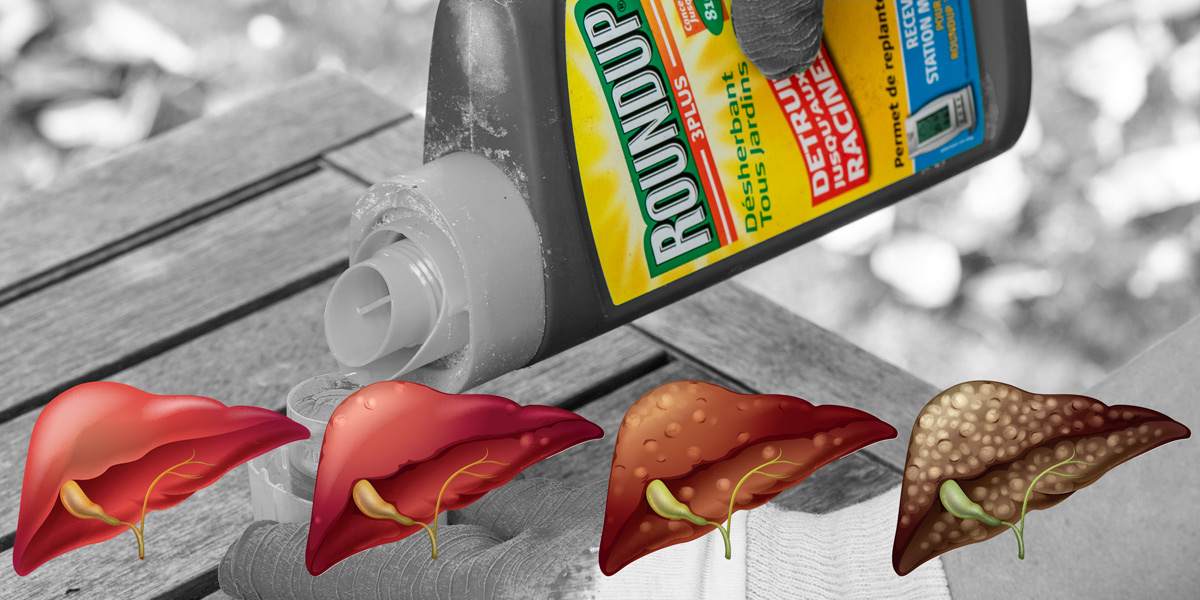
Results advance previous research showing exposure to Roundup herbicide caused liver disease
A new study shows that patients with an advanced form of non-alcoholic fatty liver disease (NAFLD) called non-alcoholic steatohepatitis (NASH) and have higher glyphosate residue levels in their urine, compared with patients with the less serious form of NAFLD.
Patients with NASH are considered to be at a high risk of developing even more serious diseases, such as cirrhosis and liver cancer.
The study was led by Prof Paul Mills of the Dept of Family Medicine and Public Health at the University of California, San Diego, with the involvement of the NAFLD Research Center in La Jolla, California. The sample size was 97 patients.
The new study advances previous research led by Dr Michael Antoniou at King's College London. Dr Antoniou's team found that rats fed the glyphosate-based herbicide Roundup at very low levels within regulatory safety limits developed NAFLD and NASH over a long-term period of two years.
Dr Antoniou's study, being a controlled animal feeding trial, shows a causative link between exposure to Roundup herbicide and NAFLD and NASH.
Prof Mills' study does not prove that glyphosate actually causes liver disease. It is an "after the fact" study in humans with liver disease, in which exposure to glyphosate herbicide was not controlled but glyphosate excretion was measured after the subjects became ill. However, it does show a correlation between high glyphosate levels in human urine and NASH.
The study suggests that people should minimise their exposure to glyphosate herbicide and other pesticides by seeking out organically grown food.
Commenting on the new study, Dr Antoniou said, “Our laboratory animal studies identified Roundup exposure as a previously unsuspected risk factor for developing NAFLD and NASH. The survey conducted by Prof Mills takes takes our findings a step forward by demonstrating a correlation between glyphosate exposure and the severity of liver disease in humans."
Dr Antoniou continued, "The question that remains unanswered is which component(s) of commercial glyphosate-based herbicides constitute the NAFLD-NASH risk factor. Is it the glyphosate alone, or the toxic adjuvants present in commercial formulations, or a combination of the two? Further studies are needed to resolve this crucial issue.”
Exactly how glyphosate excretion levels in urine correlate with the amounts actually present in the vital organs of the body is not known. The pesticide industry claims that high urine levels are a positive thing because the body is successfully excreting the chemical.
However, this notion is contradicted by research led by Dr Monika Kruger in Germany. Dr Kruger found that glyphosate levels in a range of organs in dairy cows was very similar to that in urine. This suggests that glyphosate can accumulate in the body. In addition, chronically ill people had higher glyphosate residue levels in their urine than healthy humans, suggesting that high glyphosate excretion levels are not a healthy sign.
In addition, a separate study in pregnant women living in the US showed that glyphosate levels in their urine correlated with shortened pregnancy lengths.
Prof Mills's study adds weight to the probability that high glyphosate levels in urine are a signal of ill health, at least with relation to NAFLD and especially NASH.
The new study:
Mills PJ et al (2019). Glyphosate excretion is associated with steatohepatitis and advanced liver fibrosis in patients with fatty liver disease.
Clin Gastroenterol Hepatol. 2019 Apr 4. pii: S1542-3565(19)30361-1. doi: 10.1016/j.cgh.2019.03.045. [Epub ahead of print]
https://www.ncbi.nlm.nih.gov/pubmed/30954713










